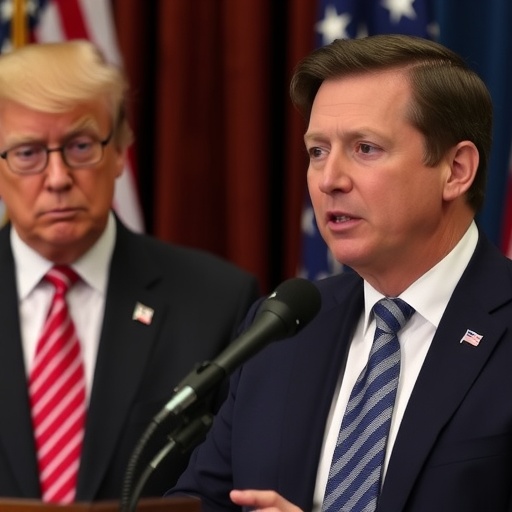Zelensky Urges Trump to Escalate Russian Oil Sanctions: Target Entire Sector Beyond Rosneft and Lukoil
In a dramatic plea amid escalating tensions in Eastern Europe, Ukrainian President Volodymyr Zelensky has called on the incoming Trump administration to intensify oil sanctions against Russia, expanding them from just two major companies—Rosneft and Lukoil—to the entire Russian oil sector. This urgent request came during high-stakes talks in London with European allies, where Zelensky also demanded the provision of long-range Tomahawk missiles to bolster Ukraine support efforts against ongoing Russian aggression.
- Zelensky’s Direct Appeal to Trump Signals Shift in Ukraine’s Strategy
- From Rosneft and Lukoil to Total Sector Lockdown: The Economic Stakes
- Tomahawk Missiles on the Table: Bolstering Ukraine’s Long-Range Strike Capabilities
- London Talks Unite European Front Against Russian Aggression
- Potential Ripple Effects: Reshaping Global Energy and Security Dynamics
The appeal underscores the dire stakes for Ukraine as it faces a protracted conflict now entering its third year. Zelensky’s push arrives at a pivotal moment, just weeks before Donald Trump’s inauguration, signaling Kyiv’s hope that a more aggressive U.S. stance could tip the balance in the war-torn nation’s favor. With Russia’s economy heavily reliant on oil exports—accounting for nearly 40% of its federal budget in 2023—such sweeping measures could deliver a devastating blow to Moscow’s war machine.
Zelensky’s Direct Appeal to Trump Signals Shift in Ukraine’s Strategy
President Zelensky wasted no time in framing his request as a non-negotiable step toward victory. Speaking to reporters after closed-door meetings in London, he stated, “Sanctions on just Rosneft and Lukoil are a start, but they are not enough. Russia’s oil revenues fuel the bombs falling on our cities. President-elect Trump has the power to choke off this lifeline entirely—by targeting every Russian oil company, from Gazprom Neft to Surgutneftegas.” This bold directive highlights a strategic pivot for Ukraine, moving beyond piecemeal restrictions to a comprehensive economic siege on Russia’s energy dominance.
The context of these remarks is rooted in the evolving geopolitical landscape. Since Russia’s full-scale invasion of Ukraine in February 2022, Western nations have imposed layers of sanctions aimed at crippling Moscow’s ability to fund its military operations. Initial measures focused on key players like Rosneft, the world’s largest publicly traded oil company with reserves exceeding 20 billion barrels, and Lukoil, which produces over 1.7 million barrels per day. However, these firms have adapted by rerouting exports to markets like China and India, mitigating some financial pain. According to the International Energy Agency (IEA), Russian oil exports hit 7.6 million barrels per day in late 2023, barely dented from pre-war levels despite the curbs.
Zelensky’s urgency stems from Ukraine’s battlefield realities. Russian forces, bolstered by oil-funded munitions, have made incremental gains in the Donbas region, capturing key areas like Avdiivka in early 2024. By broadening oil sanctions, Ukraine hopes to slash Russia’s projected $200 billion in oil revenues for 2024, potentially forcing budget cuts to defense spending. Experts estimate that a full-sector ban could reduce Russian GDP by up to 5%, exacerbating domestic inflation rates already hovering at 7.4%.
During the London discussions, Zelensky emphasized the human cost, recounting stories of families displaced by drone strikes powered by Russian oil money. “Every barrel of oil sold is a betrayal of peace,” he declared, evoking emotional resonance that has become a hallmark of his international advocacy. This personal touch not only humanizes the conflict but also pressures allies to act decisively.
From Rosneft and Lukoil to Total Sector Lockdown: The Economic Stakes
Delving deeper into the specifics, the current sanctions regime against Rosneft and Lukoil—imposed by the U.S. in 2022 under the Biden administration—has frozen assets and barred Western technology access, yet loopholes persist. Rosneft, state-controlled and intertwined with Vladimir Putin’s inner circle, reported $120 billion in revenue last year, much of it from shadow fleet tankers evading G7 price caps set at $60 per barrel. Lukoil, a private giant, has similarly navigated restrictions, maintaining production at 80% capacity through partnerships in non-Western markets.
Zelensky’s proposal to extend oil sanctions to the entire sector would encompass over 20 major entities, including state behemoths like Transneft and smaller independents. This holistic approach, he argues, would dismantle Russia’s ability to circumvent penalties via third-party sales. Data from the Centre for Research on Energy and Clean Air (CREA) reveals that Russia earned €180 billion from fossil fuels in the first nine months of 2023 alone, with oil comprising 60%. A blanket sanction could redirect global supply chains, potentially lowering Brent crude prices by 10-15% as markets adjust, benefiting consumers worldwide but hammering Moscow’s coffers.
The economic ripple effects extend beyond Russia. European nations, heavily dependent on Russian energy pre-war, have diversified sources—Norway’s exports rose 15% in 2023, and U.S. LNG shipments to Europe surged 50%. Yet, implementing Zelensky’s vision requires coordinated action. The EU has already banned seaborne oil imports from Russia, but gaps in gas and refined products remain. In London, representatives from the UK, France, and Germany pledged to align with U.S. efforts, with British Prime Minister Rishi Sunak affirming, “We stand with Ukraine in squeezing Russia’s war economy dry.”
Critics, however, warn of unintended consequences. Oil market analysts at JPMorgan predict that full sanctions could spike global energy prices short-term, adding $0.50 per gallon to U.S. gasoline costs. Nonetheless, Zelensky counters that the moral imperative outweighs economic discomfort, citing Ukraine’s $150 billion in reconstruction needs post-war.
Tomahawk Missiles on the Table: Bolstering Ukraine’s Long-Range Strike Capabilities
Parallel to his oil sanctions push, Zelensky’s London itinerary included a fervent request for Tomahawk missiles, the U.S.-made cruise weapons with a 1,500-mile range capable of precision strikes deep into enemy territory. “Tomahawks would allow us to hit Russian logistics hubs without risking our pilots,” Zelensky explained, referencing recent Ukrainian successes with British Storm Shadow missiles, which have degraded over 20% of Russia’s Black Sea Fleet.
The demand reflects Ukraine’s evolving military doctrine. Since receiving ATACMS systems in late 2023, Kyiv has targeted ammo depots and airfields up to 200 miles away, disrupting Russian advances. Tomahawks, with their subsonic speed and low-altitude flight paths, would extend this reach to Crimea and beyond, potentially neutralizing oil refineries funding the invasion—a direct tie-in to Zelensky’s sanctions agenda. The U.S. has supplied over 39,000 Javelin anti-tank missiles and 1.5 million 155mm artillery rounds under Ukraine support packages totaling $61 billion since 2022, but long-range munitions remain restricted to avoid escalation.
In London, European allies echoed the call. French President Emmanuel Macron, attending virtually, noted, “Enhancing Ukraine’s defensive arsenal is key to deterring further Russian aggression.” The UK, having pledged £2.3 billion in military aid for 2024, is exploring joint production of missile components. Statistics from the Kiel Institute for the World Economy show Europe providing 55% of total lethal aid to Ukraine, underscoring the transatlantic burden-sharing imperative.
Yet, the Tomahawk request faces hurdles. Trump’s past skepticism toward endless aid—calling NATO allies “delinquent”—raises questions about future commitments. Zelensky, undeterred, invoked shared values: “These missiles aren’t just weapons; they’re shields for democracy.” If approved, they could shift the conflict’s dynamics, enabling Ukraine to interdict Russian supply lines more effectively and complement economic pressures from sanctions.
London Talks Unite European Front Against Russian Aggression
The London summit served as a crucial forum for Ukraine support, drawing leaders from 20 nations to forge a unified response. Hosted at Lancaster House, the discussions transcended Zelensky’s appeals, addressing broader issues like frozen Russian assets—$300 billion in Western banks—and reconstruction financing. German Chancellor Olaf Scholz committed an additional €5 billion in aid, while Italy’s Giorgia Meloni advocated for stricter enforcement of existing oil sanctions.
Key outcomes included a joint declaration condemning Russia’s circumvention tactics, such as using Indian and Turkish refineries to launder sanctioned crude. The group also explored secondary sanctions on enablers, targeting insurers and shippers in the shadow fleet that transports 70% of Russia’s seaborne oil. Zelensky praised the solidarity, stating, “In London, we didn’t just talk—we committed to action that will make Russia pay for its crimes.”
Behind the scenes, intelligence sharing intensified, with updates on Russian troop movements near Kharkiv. The talks highlighted fractures too: Hungary’s Viktor Orbán, absent due to his pro-Russia leanings, continues to block EU aid packages. Nonetheless, the momentum builds toward a February 2024 NATO summit, where Tomahawk missiles and sanctions expansion could feature prominently.
Economically, the alliance eyed alternatives to Russian energy. The EU’s REPowerEU plan has reduced gas imports from Russia by 80%, investing €300 billion in renewables. For Ukraine, this means sustained blackouts relief through U.S. transformers and European grid support, vital as winter deepens the humanitarian crisis affecting 6 million displaced citizens.
Potential Ripple Effects: Reshaping Global Energy and Security Dynamics
Looking ahead, Zelensky’s initiatives could redefine international relations. If Trump heeds the call for comprehensive oil sanctions, it might signal a hawkish U.S. pivot, contrasting his campaign rhetoric of quick resolutions. Analysts at the Atlantic Council foresee a 20-30% drop in Russian oil exports within a year, pressuring Putin to negotiate or face internal unrest amid rising unemployment in energy regions like Siberia.
On the military front, Tomahawk missiles integration would enhance Ukraine’s asymmetric warfare edge, potentially deterring Russian escalations like nuclear saber-rattling. Combined with sanctions, this dual strategy aims to exhaust Moscow’s resources; Russia’s defense budget, at 6% of GDP, strains under 1.5 million mobilized troops and €100 billion annual war costs.
For global markets, the shift promises volatility but long-term stability. OPEC+ production cuts might offset supply dips, while Ukraine’s untapped gas reserves—estimated at 1.1 trillion cubic meters—offer post-war export potential. Zelensky envisions a “victory fund” from seized assets to rebuild, targeting $500 billion in claims against Russia.
As Trump assembles his national security team, Kyiv watches closely. Diplomatic channels buzz with outreach, including Zelensky’s planned Washington visit. The path forward hinges on transatlantic resolve: Will expanded oil sanctions and advanced weaponry hasten peace, or prolong the stalemate? Ukraine’s fate, and Europe’s security, hang in the balance, with Zelensky’s London gambit marking a resolute step toward accountability for Russia‘s invasion.










